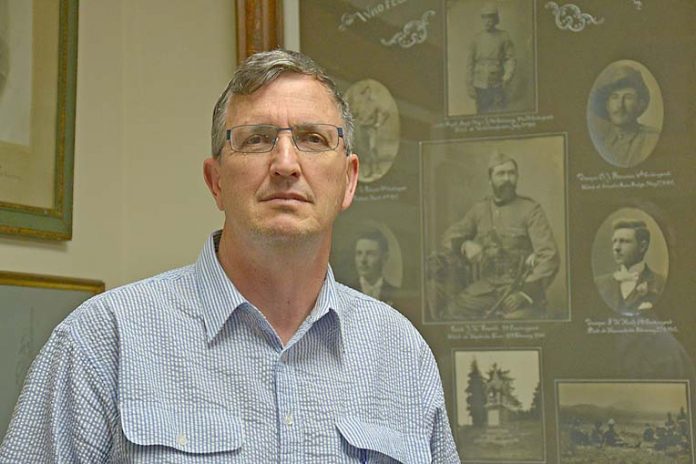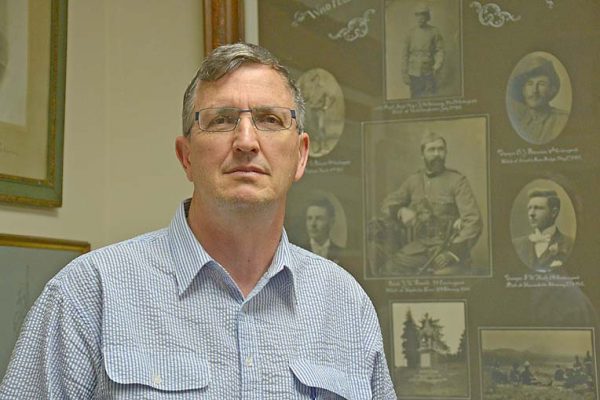

UNCOVERING the story behind Australia’s Aboriginal servicemen, researcher Peter Bakker admits Mount Gambier’s William Charles Westbury was one of his greatest finds.
Serving in the Boer War and World War I, the Mount Gambier born soldier, who still has descendants living in the area, has been verified as Australia’s ninth Aboriginal serviceman for the Boer War and the first for South Australia.
Spending the past year uncovering the details of Mr Westbury’s life from his time in Mount Gambier to Pinnaroo, and his service in the Boer War and World War I, Mr Bakker is determined to document little known men who put their lives on the line for their country.
“Aboriginal participation in military service overseas for Australia is one area that has been significantly neglected,” he said.
“There has been a lack of knowledge, even among the Aboriginal community of who served – many had even been forgotten altogether as they had no descendants.
“When you talk about reconciliation it’s not just about saying sorry, it’s about recognising people’s worth.”
Working with Port MacDonnell resident Ken Jones, who has been identified as a descendant of Mr Westbury, Mr Bakker has successfully tracked the life of the dedicated Australian Aboriginal soldier.
One of two children to James Westbury and Ellen Baker, Mr Westbury is estimated to have been born in Mount Gambier in 1879.
He served with 6 SA Imperial Bushmen in South Africa during the Boer War and was working as a farm labourer in Pinnaroo at the time of his enlistment on August 25, 1914, for service with the Australian Imperial Force (AIF) in World War I.
According to Mr Bakker, it appears no one in Pinaroo knew of his Aboriginal background when he enlisted in 10 Infantry Battalion – one of the first AIF infantry units established during World War I.
“When William set off on the ship, the Ascanius he and the other troops believed they were heading to Europe but on the way they found out they were destined for the Mena Camp in Egypt,” Mr Bakker said.
“After a further three months of military training in the desert they were sent to invade the Dardanelles Peninsula.
“South Australia’s 10 Battalion was the initial AIF group to land at Gallipoli at 4.30am on April 25, 1915, so that makes William Westbury what we call in military circles one of Australia’s iconic First Day Landers.”
Only three days later, and after being shot in the foot and surviving the initial chaos, Mr Westbury was promoted to corporal.
Over the next six months, like many others, he was injured and fell ill with gastroenteritis, necessitating his evacuation for medical treatment and then return to active duty.
On his second return he rejoined his battalion which had just been evacuated from Gallipoli in December 1915.
However, this was not the end of Mr Westbury’s service.
Following their withdrawal to Egypt, some of 10 Battalion, including Mr Westbury, were transferred to the newly formed 50 Battalion in February 1916 to provide them some experienced troops.
50 Battalion was then sent into action with the fierce fighting on the Eastern Front in northern France.
“In late 1916 William was promoted to the rank of sergeant – this makes William Charles Westbury the only one of the nine verified Aboriginal Boer War soldiers to have also served in World War I,” Mr Bakker explained.
“William attained a rank as non commissioned officer in both wars – these achievements make him unique in Aboriginal military history.”
In November 1916, Mr Westbury was sent to England to become an instructor in 13 Australian Training Battalion, however in April 1917 he was sent home to Australia suffering from rheumatism and ill health from his time in the trenches.
After arriving in Adelaide in May 1917 and spending time with his sister’s family in Port MacDonnell, he returned to a rousing reception by the people of Pinnaroo.
Now, almost 101 years later, Mr Westbury has been officially recognised by the Returned Aboriginal Veterans South Australia as Aboriginal and on February 20 this year a new gravestone will be dedicated in Pinnaroo, with an inscription recognising both his Boer War and World War I service.
“As a Boandik man, this is very significant to Mount Gambier’s history,” Mr Bakker said.
“I had never thought about Aboriginals serving in as early as World War I and when I first started my research 10 years ago it was thought only 300 to 400 served, now over 1100 are documented.
“There are photographs and material out there, you just have to do some digging.”







